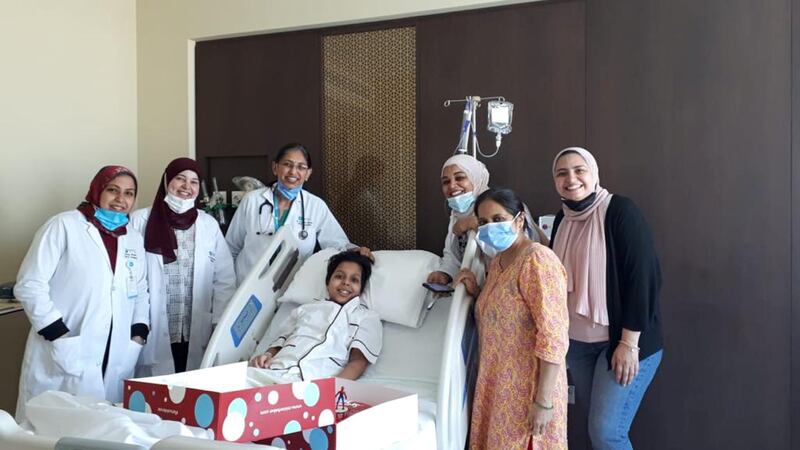Doctors in Sharjah saved the life of a boy who was left temporarily paralysed after being diagnosed with a complex immune disorder.
Twelve year-old Nikhil Lakhwani was saved by the timely intervention of doctors at NMC Royal Hospital Sharjah.
After initially presenting to an orthopaedic specialist at a different hospital complaining of fatigue and muscle weakness, his condition quickly deteriorated.
He was then moved to NMC Royal Hospital Sharjah and put on a ventilator after becoming completely paralysed.
Doctors diagnosed the young boy with Guillain-Barre syndrome (GBS)- a rare disorder in which your body's immune system attacks your nerves.
Dr Manoj Singh, consultant paediatric neurologist at the hospital, said Nikhil had no nerve reflex and had limited muscle power in his lower and upper limbs.
“The clinical picture was typical of severe and rapidly progressing Guillain-Barre syndrome,” he said.
“Upon confirming the diagnosis with the help of an MRI and Nerve Conduction Study, we immediately transferred him to the paediatric ICU to initiate the treatment as his condition started getting worse.”

There is no known cure for the syndrome. However, some therapies can lessen the severity of the illness and shorten recovery time.
Dr Deepika Gandhi, who was part of the team that treated Nikhil, said GBS is a rare condition. Less than 10 cases are diagnosed at the hospital each year.
“It is a rare and uncommon condition. Guillain-Barre Syndrome occurs in all age groups,” she said.
“Adults are affected more commonly than children. The overall incidence has been estimated to range from 0.4 to 2.4 cases per 100,000 per year, [globally].”
“With the widespread eradication of polio, GBS is the most common cause of acute and subacute flaccid paralysis in infants and children.
“As we saw in Nikhil’s case, it is frequently preceded by an unspecified infection.”
This disease is also called ascending paralysis. It starts with the toes and ascends upwards, with the recovery moving in the reverse direction.
Breathing improves first and the legs recover last.
“The time factor is critical as the disease progresses fast, hence an early diagnosis and prompt care can save a life and minimise the impact of the disease,” said Dr Gandhi.
As part of his treatment plan, Nikhil underwent intravenous immunoglobulin and plasma exchange, which made a significant change in the course of the illness.
Nikhil’s mother, Tanu Lakhwani, said seeing her son’s condition deteriorate so rapidly was distressing to watch.
“We were told that our son’s paralysis involved his breathing muscles and the muscles of his throat,” she said.
“He was not able to swallow and was choking on his own saliva.
“The doctor said the disease was progressive and it would take a while for the debilitating muscle strength to reverse.
“[She said] It would be a few months before he would be able to resume his normal functions with the same ease as before.”
During his time in hospital, Nikhil also developed kidney stones because of the muscle paralysis and an irregular heart beat.
“It was so heartbreaking to see him always in pain,” said Ms Lakhwani.
“The doctor explained to us that it was not neurological, but that he was feeling pain because his nerves were behaving abnormally.
“All of this was so tormenting as our child was completely normal before this disease took over.”
After intensive treatment by a large medical team comprising of a paediatric nephrologist, cardiologist, urologist, endocrinologist and neurologist, Nikhil finally started showing signs of improvement.
He was gradually taken off the ventilator and began to recover.
On May 10, after over a month in the hospital, he was discharged and can now walk and move independently.





